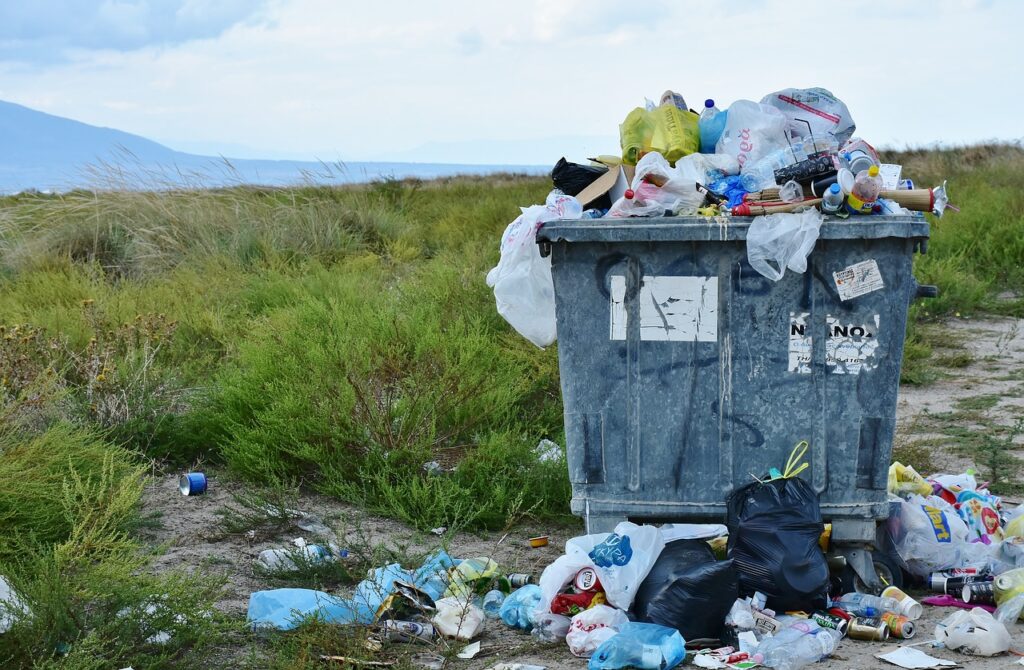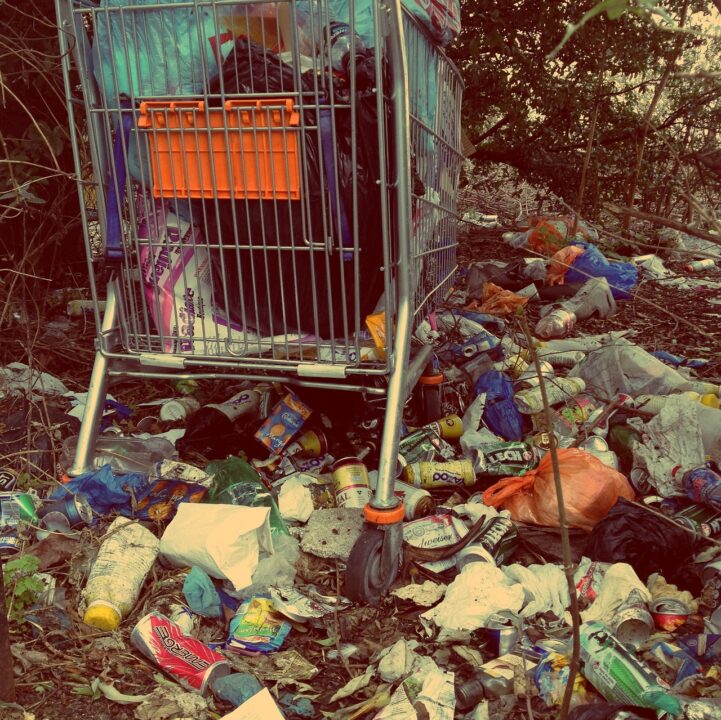It’s no longer news that human beings are the main cause of environmental hazards, but how do we deal with that?
Those soda bottles, donut paper wraps, beverage cans, used tissue papers, nylons, and so on are called litters when left in the wrong places. In this article, I will be discussing 8 ways to stop littering.
Some of them include waste disposal education for young children and youths, primarily. Personal waste management techniques should also be taught to those who are very far away from civilization.
For example, those in rural areas are not equipped with modern facilities like recycling centers.
Littering is the art of dumping garbage or waste products in the wrong places.
Waste products that are not disposed of properly can cause air pollution, water pollution, and land pollution.
All this pollution is what encourages the breeding of parasites like Plasmodium, which causes malaria.
Let’s see 8 ways to stop littering.
8 Ways To Stop Littering

Littering, as prevalent as it is, can be effectively curbed and successfully managed. A popular saying states that “When there is a will, there is a way”.
Having the right mindset about littering will go a long way in preventing littering, and that brings us to the first point here.
1. Youth And Younger children’s Education On Proper Waste Disposal
Studies carried out by the Dutch VROM show that most of the people littering the environment are between the ages of 12 and 24.
This shows that the majority of the world’s people are young. Proper waste disposal education should be given to young people in private and public schools.
This education will help young children and youths have the right knowledge about waste products. The knowledge will then give them a sense of responsibility.
Young children and youths are mostly happy when ‘grown-up’ tasks are given to them. To them, it demonstrates your trust in them. Not only that, it is an effective way of inculcating good habits in them. You can also learn about grownups’ tasks that children can do.
2. Uncompromising Waste Management Regulations
Laws are made to guide our actions to prevent chaos and destruction. Without them, people would act recklessly without consequences. One of the 8 ways to stop littering is to enforce laws that help regulate waste management.
These regulations should guide people and companies on how to properly dispose of waste products. As earlier said, waste products can cause hazards to aquatic life.
Most waste products disposed wrongly into the sea, have been found in the bellies of whales and fishes. These aquatic animals likely mistook this garbage as food and swallowed them.
Creating and enforcing better regulations on proper waste product disposal can effectively stop littering. For example, anyone caught in the act or convicted guilty of wrongful disposal of waste can be charged a fine.
Nobody likes losing money, so charging a fine is also part of the ways to stop littering.
3. Personal Wastes Disposal Education
Most people living in rural areas don’t have access to modern facilities and hence resort to any means convenient to them to dispose of their waste products.
With proper education on how they can properly dispose of their waste products, littering can be curbed and reduced to the nearest minimum.
Since most of the waste materials produced in remote places are organic, people in remote rural areas should be taught how to properly dispose of their organic waste through landfilling.
Most companies in the urban areas are now expanding to the rural areas. These expansions could also mean more waste products. As a result of this, inorganic waste products are also generated in remote rural areas.
People in rural areas should be taught how to separate inorganic waste products from organic waste products. This is because inorganic waste products are not disposed of the same way organic waste products are.
All these and more are the 8 ways to stop littering effectively.
4. Standard Waste Recycling Facilities
Since incineration is one of the ways to manage waste products, some waste materials are toxic to human beings and can cause respiratory diseases when inhaled for long. Recycling those kinds of waste products is a way of preventing airborne hazards.
The question now is, if the facilities for recycling waste are not available, how then do we dispose of hazardous waste materials? The outcome will be very dangerous.
Therefore there is a need for recycling facilities in every region. These facilities should be installed properly at strategic locations, where they can operate without causing harm to the public.
These recycling facilities must be managed in such a way that even those operating them are not at risk. This is to ensure that new problems are not created while trying to solve another problem.
And that brings us to another important point.
5. Standard Waste Management Systems
Waste Management is a great concern in third-world countries, hence the need for a standard waste management system. The availability of these systems takes care of proper waste disposal. It is this system that makes sure that everything in the 8 ways to stop littering is adhered to.
These systems research the best ways to dispose of waste products without endangering lives. They implement the solutions and make sure that there is a smooth running of recycling facilities and other facilities that work to manage waste appropriately.

6. Standard Waste Collection System
A waste collection system is one of the 8 ways to stop littering. This system involves the provision of trash collection boots. These boots are then kept at designated locations, accessible to those living in that area.
This way, everyone can simply take their trash there and dump them inside the trash boots without stress.
To back up the provision of trash boots, the system also takes care of emptying the trash boots at specific intervals. This should be done often so that the trash boot will not get too full to the point of pouring out.
This will also encourage people to continue depositing their waste products there. This system helps to eliminate litter and keep the environment clean and healthy.
7. Affordable Waste Collection Fees
Finance is what keeps any organization afloat. Therefore people must commit a fee for the proper disposal of their waste products.
Littering is also caused by the high fee required for waste management. This is why making waste management services affordable is part of the 8 ways to stop littering.
Making waste collection fees affordable will encourage people to give their garbage to waste product collectors who in turn take the waste products to waste management facilities, for them to be degraded.
8. Waste Management Campaigns
It’s good to have adequate facilities and infrastructures put in place to properly manage waste products. All these provisions will be futile in curbing waste products if people are not aware of their existence.
People or citizens need to know that there is a system in place to take care of their waste products. People need to be aware of the infrastructures put in place to effectively dispose of their waste products.
If people are not aware that such systems are functional, then everything is all for naught. Waste management awareness campaigns are one of the 8 ways to stop littering.
These awareness campaigns should not only be done in urban areas but in rural areas as well so that everyone is aware.
Apart from knowing the existence of these facilities and infrastructures, people need to be sensitized about the hazards and threats that litter poses to all forms of life.
Littering has dangerous consequences that a lot of people don’t know about.
These awareness campaigns can change the narrative and help people see waste products in light of the dangers they can cause if not disposed of properly.
Final Words
These tips if employed, can help stop littering ultimately with the right attitude. Most of the people that litter have the wrong attitude.
A study carried out by two men, in the persons of Chris Sibley and James Lui produced the Two-stage Process Model Of Littering Behaviour.
These reputable men proposed that there are two classes of behavior exhibited by people when it comes to littering. One is the class of people that diffuse the responsibility of cleaning up after themselves.
This set of people believes that there are people assigned to clean up their mess. They feel like it’s not their job and that others are being paid to do those jobs.
The second class of people are those who forget to pick up their waste products and dispose of them properly. The people in the set are those that litter with the mindset that they would clean up later.
Unfortunately for them, they never remember to do so.
Therefore these attitudes that encourage littering should be changed to produce and sustain results obtained from implementing the 8 ways to stop littering permanently.



